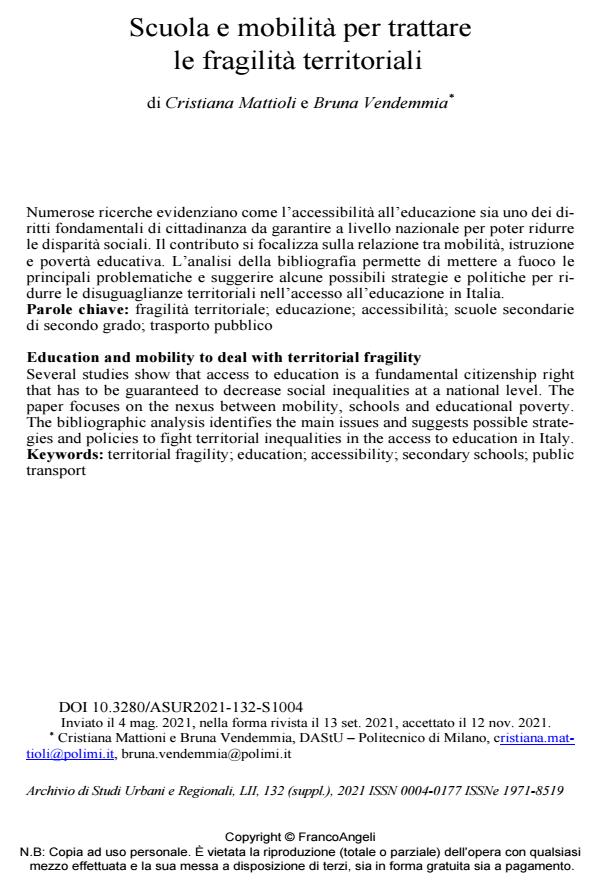Education and mobility to deal with territorial fragility
Journal title ARCHIVIO DI STUDI URBANI E REGIONALI
Author/s Cristiana Mattioli, Bruna Vendemmia
Publishing Year 2022 Issue 2021/132 Suppl.
Language Italian Pages 21 P. 53-73 File size 481 KB
DOI 10.3280/ASUR2021-132-S1004
DOI is like a bar code for intellectual property: to have more infomation
click here
Below, you can see the article first page
If you want to buy this article in PDF format, you can do it, following the instructions to buy download credits

FrancoAngeli is member of Publishers International Linking Association, Inc (PILA), a not-for-profit association which run the CrossRef service enabling links to and from online scholarly content.
Several studies show that access to education is a fundamental citizenship right that has to be guaranteed to decrease social inequalities at a national level. The paper focuses on the nexus between mobility, schools and educational poverty. The bibliographic analysis identifies the main issues and suggests possible strate-gies and policies to fight territorial inequalities in the access to education in Italy.
Keywords: territorial fragility; education; accessibility; secondary schools; public transport
- Redefining marginality on Italian Apennines: an approach to reconsider the notion of basic needs in low density territories. Bruna Vendemmia, Giovanni Lanza, in REGION /2022 pp.131
DOI: 10.18335/region.v9i2.430 - Back to (the Future) School. Reshaping the Relationship Between Mobility and Schools Fabrizia Cannella, Samuel Fattorelli, Maria Chiara Tosi, Valentina Rossella Zucca, in Cahiers de la recherche architecturale, urbaine et paysagère /2022
DOI: 10.4000/craup.11501
Cristiana Mattioli, Bruna Vendemmia, Scuola e mobilità per trattare le fragilità territoriali in "ARCHIVIO DI STUDI URBANI E REGIONALI" 132 Suppl./2021, pp 53-73, DOI: 10.3280/ASUR2021-132-S1004